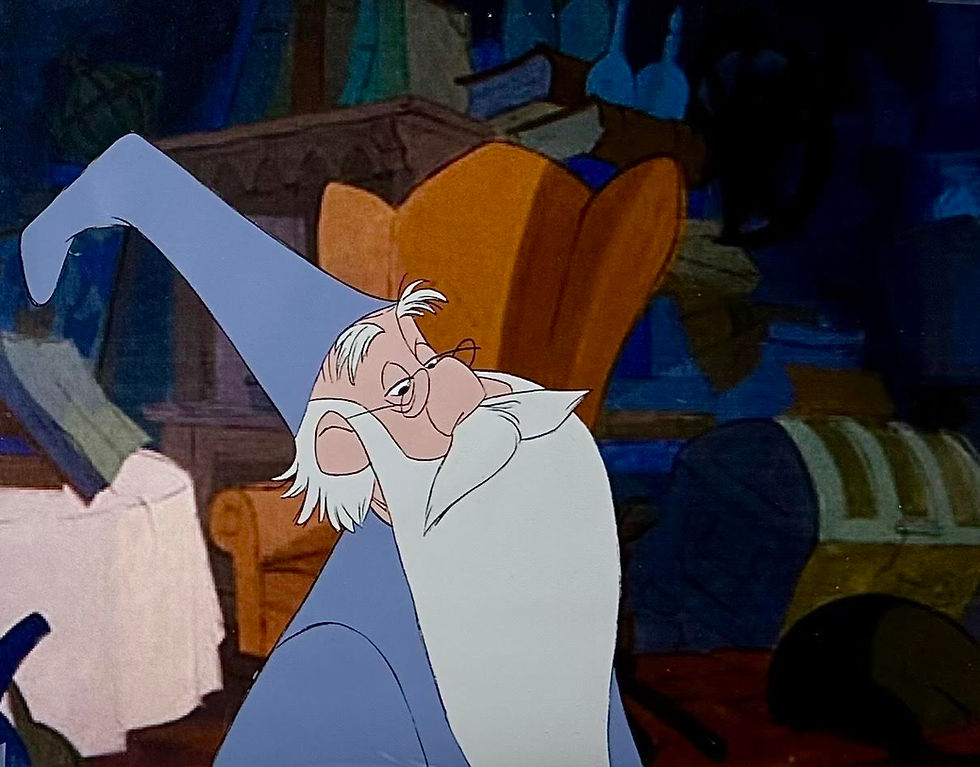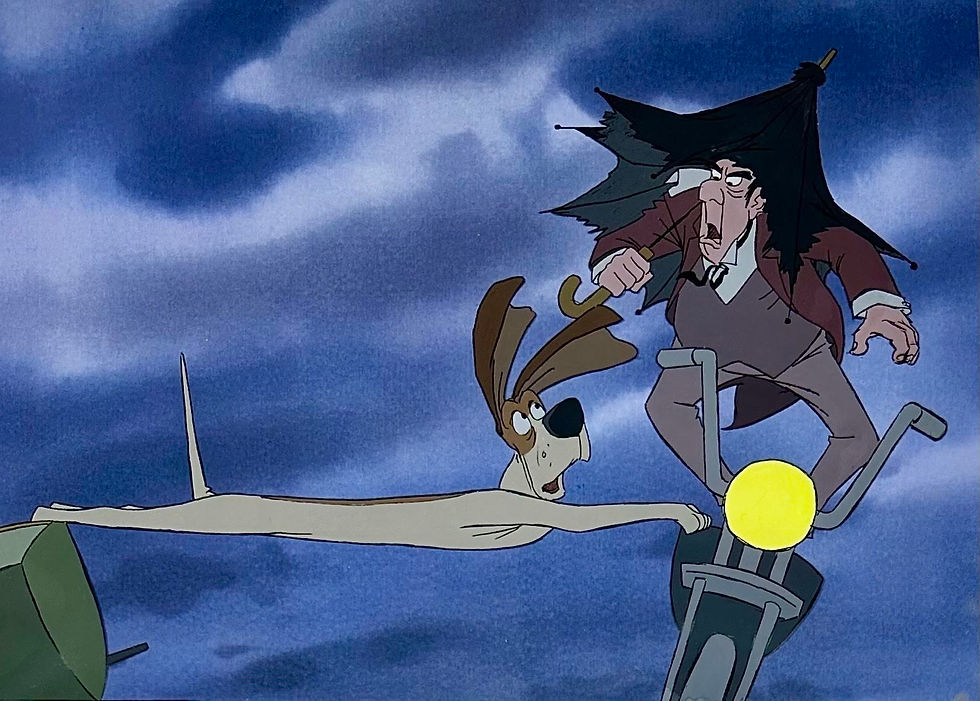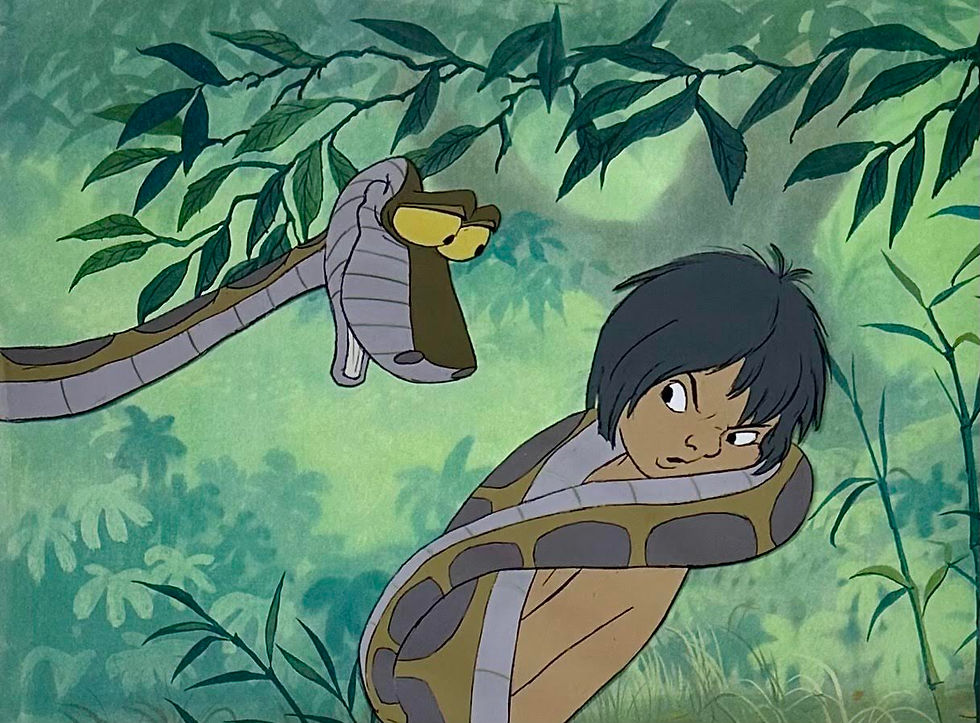Original Production Animation Cel of Jessica and Roger Rabbit from "Who Framed Roger Rabbit?," 1988
- Untitled Art Gallery

- Apr 11, 2024
- 3 min read

Original hand painted production animation cel of Jessica Rabbit and Roger Rabbit from "Who Framed Roger Rabbit?," 1988, Walt Disney Studios; Set on a lithographic background; Numbered 23 in ink lower right; Walt Disney Company Seal lower right and with original Walt Disney Company Certificate; Size - Jessica & Roger Rabbit: 7 x 4 1/4", Image 8 1/4 x 13 1/4"; Unframed.
"Roger, I want you to know I love you. I loved you more than any woman has ever loved a rabbit." - Jessica Rabbit
"Who Framed Roger Rabbit," 1988 is a Walt Disney live-action/animated fantasy featured film that was released on June 22, 1988. The film was produced by Frank Marshall and Robert Watts, written by Jeffrey Price and Peter S. Seaman, and is based on Gary K. Wolf's 1981 novel "Who Censored Roger Rabbit?" The film stars Bob Hoskins, Christopher Lloyd, Charles Fleischer, Stubby Kaye, and Joanne Cassidy. Combining live-action with animation, the story follows a private detective, Eddie Valiant, who must exonerate "Toon" Roger Rabbit who is accused of murdering a wealthy businessman. The film was a blockbuster and critical success wining three Academy Awards and a Special Achievement Award. The film grossed $329,803,958 in 1988, and at the time of release was the twentieth highest grossing film of all time. In 2016 the film was selected for preservation in the United States National Film Registry by the Library of Congress as being "culturally, historically, or aesthetically significant."
Walt Disney Pictures purchased the film rights for "Who Framed Roger Rabbit" in 1981 and in 1985 the project was revamped by Michael Eisner, the new CEO of Disney. Eisner brought in executive producer Steven Spielberg and his production company Amblin Entertainment. Spielberg convinced Warner Bros., Fleischer Studios, King Features Syndicate, Felix the Cat Productions, Turner Entertainment, and Universal Pictures/Walter Lantz Productions to "lend" their character to appear in the film; although many had stipulations were added about how the characters could be portrayed. For example Disney's Donald Duck and Warner Bros. Daffy Duck would appear as equally-talented dueling pianists; and Mickey Mouse and Bugs Bunny would also share equal time for their first ever animated screen scene together. Spielberg's negotiations contributed to audience admiration for the film because of a large number of famous animated characters appearing together for the first time. The cast of characters, combined with brilliant animation that was integrated with seamless live action, made the film a visual masterpiece!
The breakout character of the film was Jessica Rabbit, Roger's beautiful and seductive "Toon" wife. Jessica was animated by Walt Disney supervising animator Richard Williams and by James Baxter; and Kathleen Turner provided the voice of the character, but was uncredited in the film. Amy Irving supplied Jessica's singing voice and Betsy Brantley was the live actress stand-in. Jessica Rabbit was an incredible mix of cartoon and realism that merged in the creation of a modern femme fatale, who captivated male viewers all over the world!
Jessica Rabbit first appears in the film when she performs the song "Why Don't You Do Right?" at the "Ink and Paint Club." The name of the club is derived from the Ink and Paint Department of Walt Disney Animation Studios, where all the inking and painting of animation cels occurs. This is an absolutely perfect original production animation cel of Jessica and Roger Rabbit. This cel occurs in the film when Judge Doom and the Toon Patrol capture Jessica and Eddie and bring them to the Acme Factory. Doom tells them that he is the sole shareholder of Cloverleaf and plans to erase Toontown with a Dip-spraying machine so he can build a freeway in its place; and decommission the railway system to force people to use the new freeway. Roger tries but fails to save Jessica and the pair are tied to a large hook and hung in front of the Dip machine's sprayer. One of the best poses of the love couple in the entire film and a spectacular image that is perfect for any Walt Disney animation art collection!
#JessicaRabbit #RogerRabbit #WhoFramedRogerRabbit #WhyDontYouDoRight #Cel #Disney #WaltDisney #animation #animationcel #animationdrawing #productioncel #productiondrawing #untitledartgallery #KathleenTurner #StevenSpielberg #Warner Bros. #InkandPaint #GaryWolf #BobHoskins #EddieValiant #MichaelEisner #AmyIrving #MickeyMouse #BugsBunny #DaffyDuck #BettyBoop #FelixTheCat






